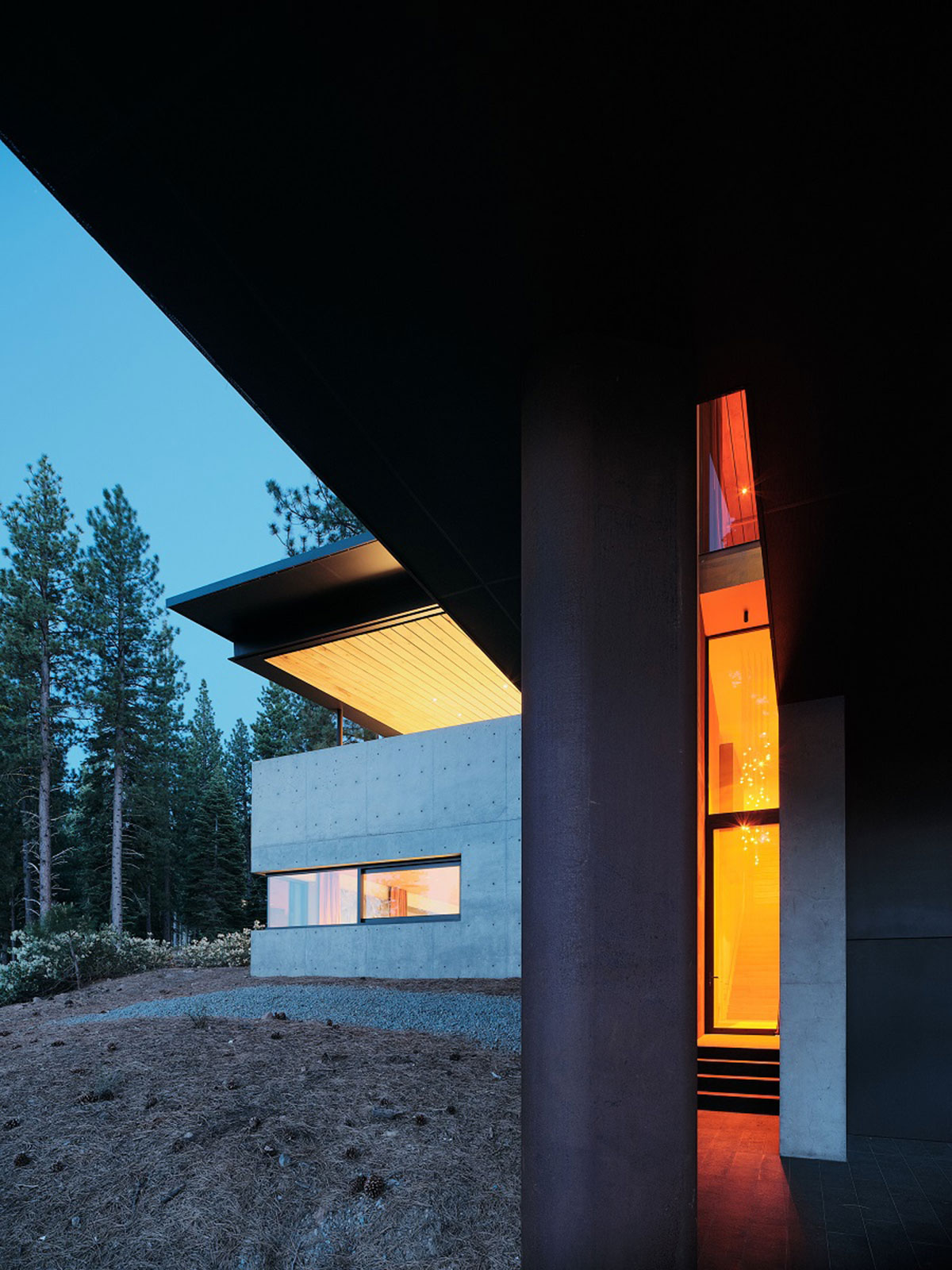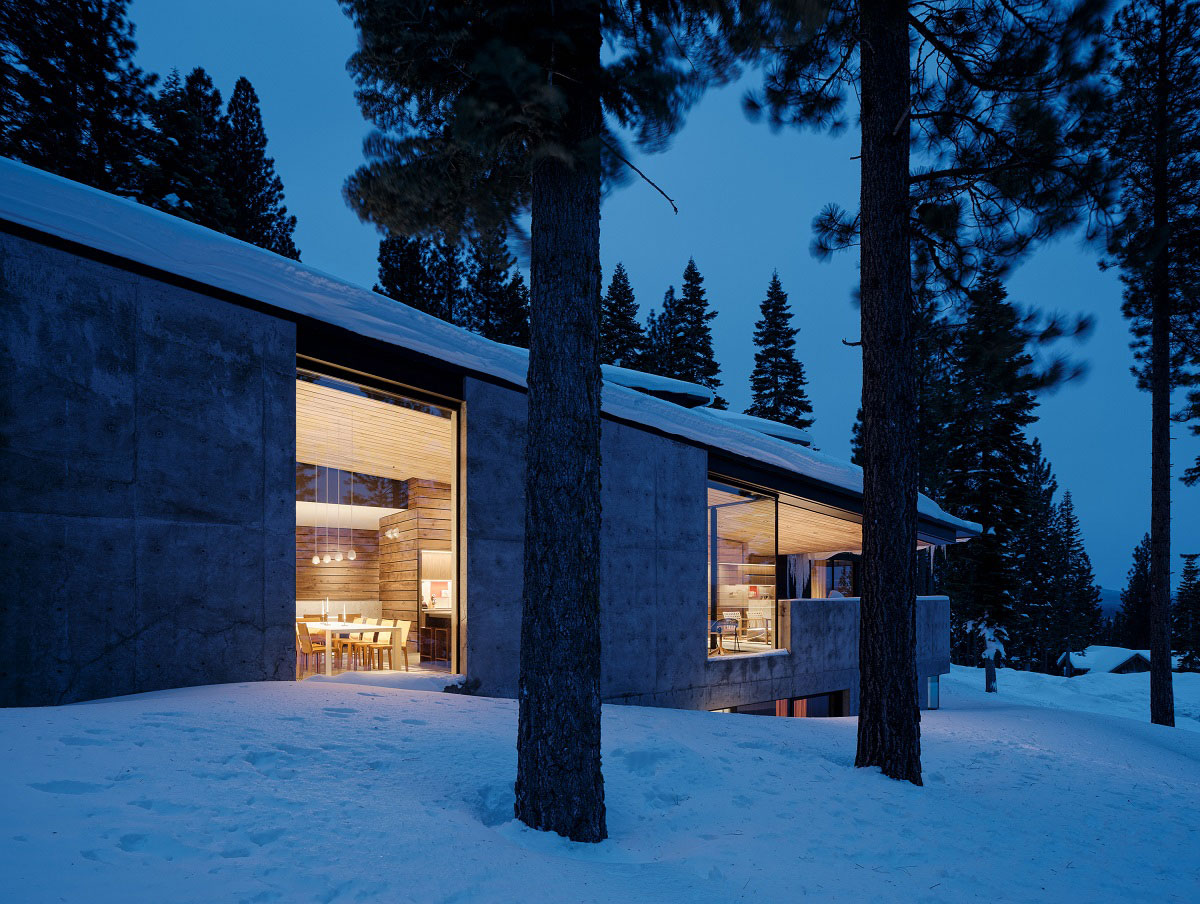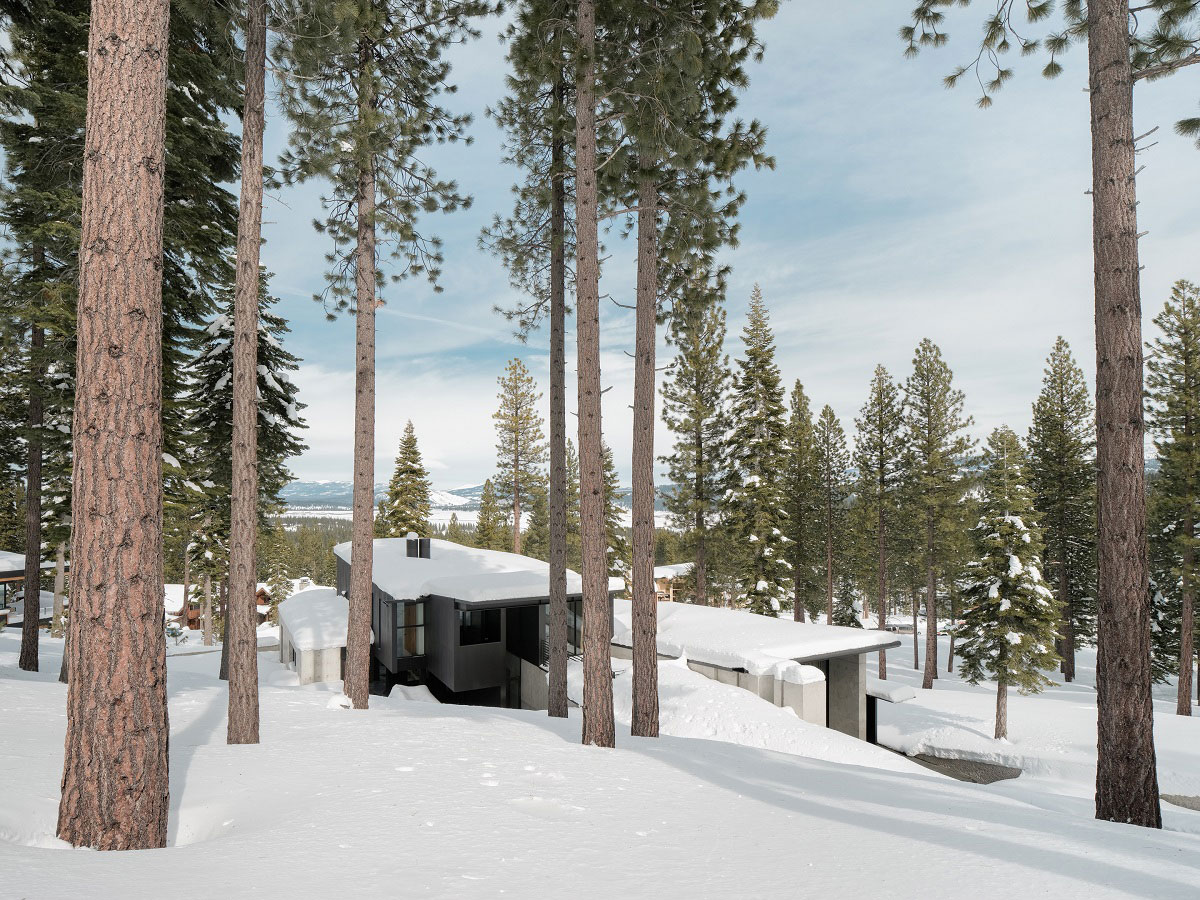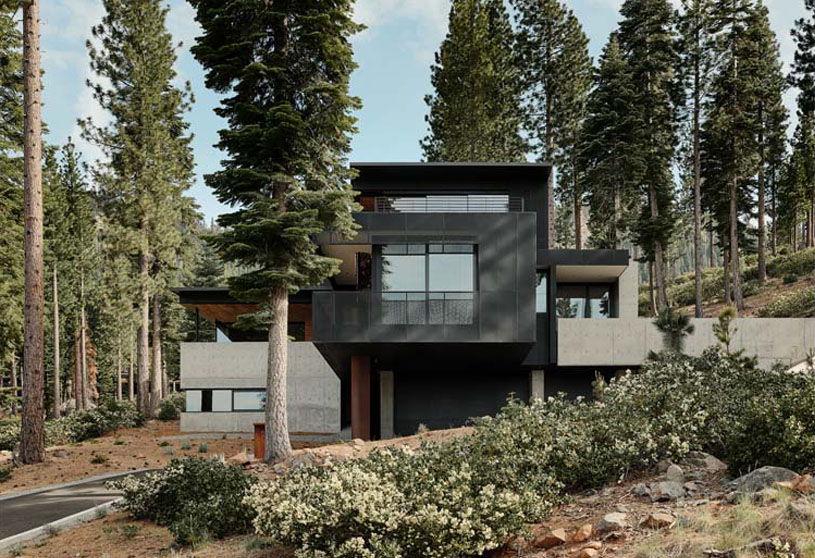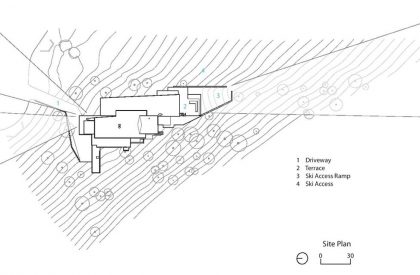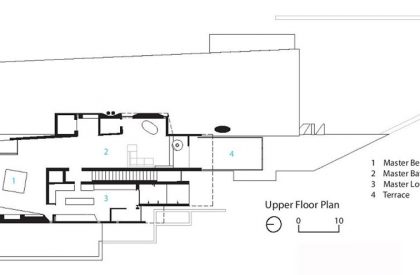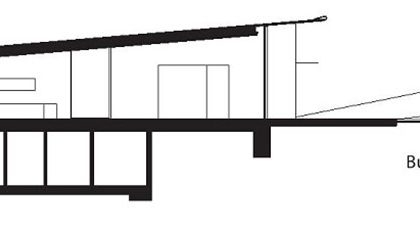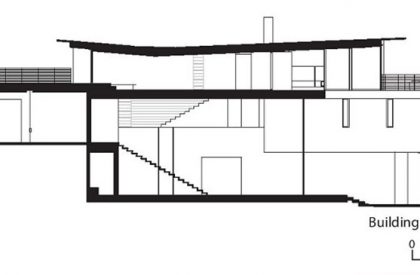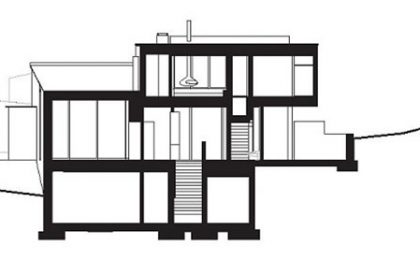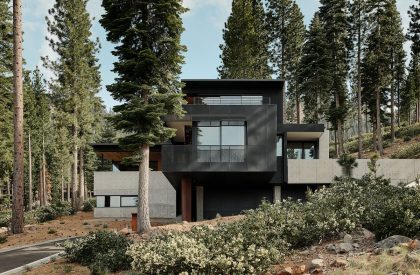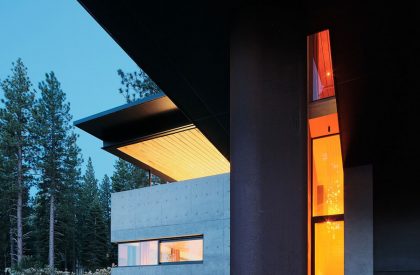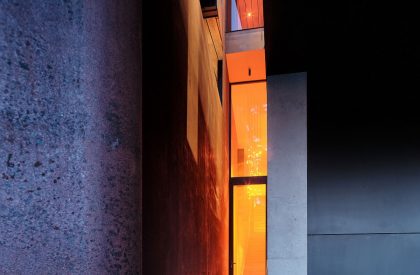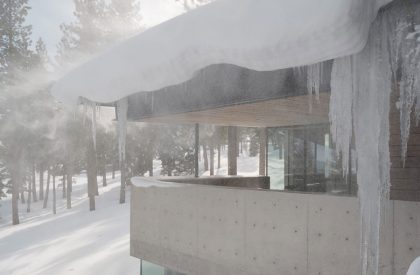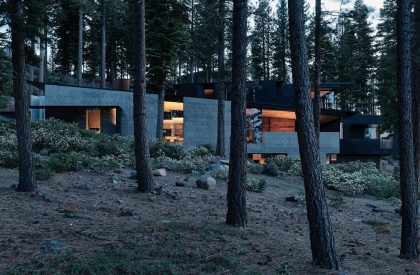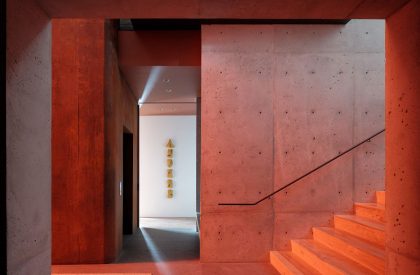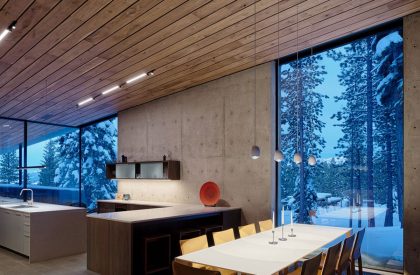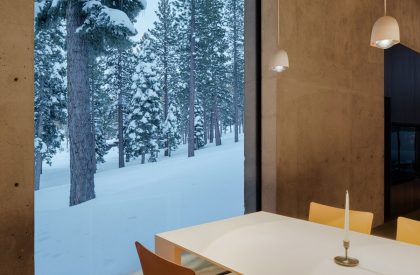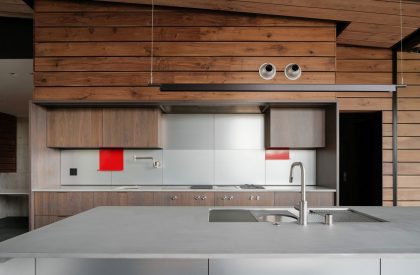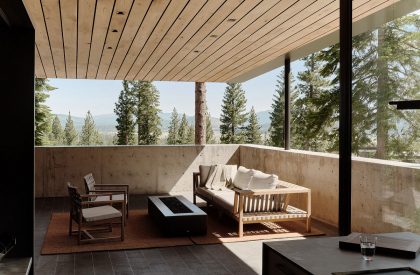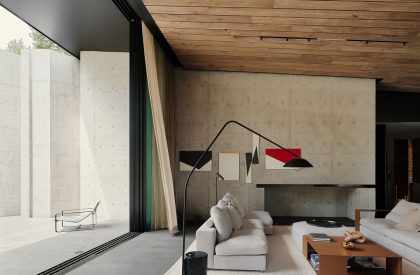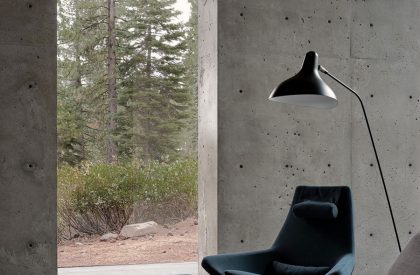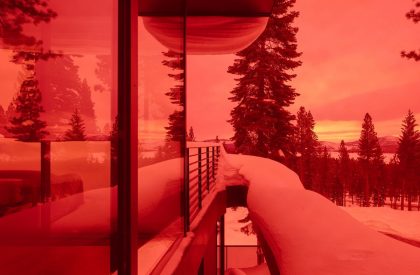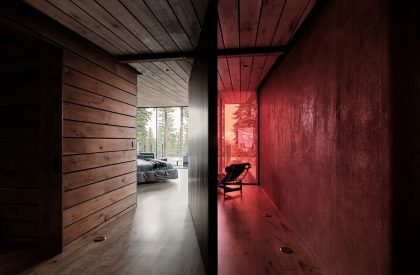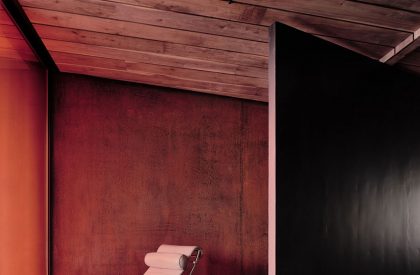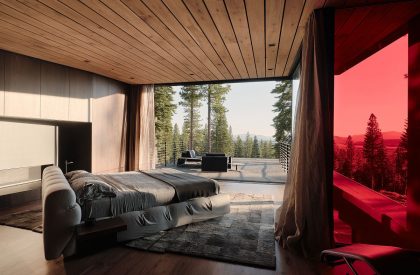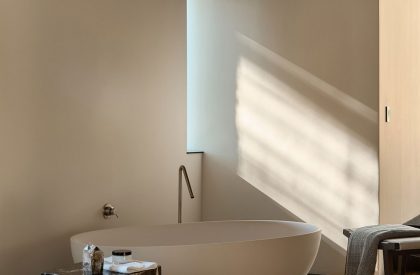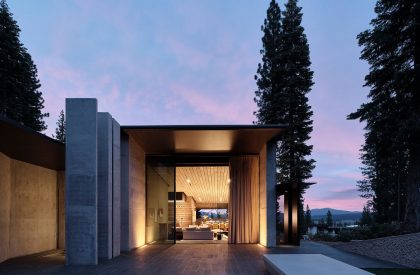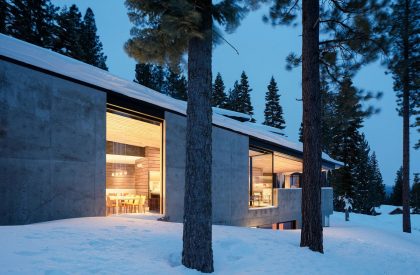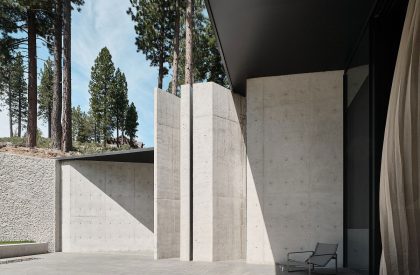Excerpt: Lookout House, designed by Faulkner Architects, stands upright at an angle to the slope providing a constant reference to the perpendicular horizon in the distance. The enclosed and darkened exterior entry provides relief from the visual noise of the neighbourhood. Red-orange glass suggests the colour of cooling magma, referencing the site’s geology and offering a warm approach. The glow extends to the interior, bathing the entry and central stair in light.
Project Description
[Text as submitted by Architect] The building site had a significant influence on the design of this house. Layered with intense geologic history at the base of a three-million-year-old volcano, the site is a north-facing 20-degree slope with equal parts refuge and prospect at 6,300 feet above mean sea level. Consisting of volcanic sediment from ancient flows and strewn with boulders up to 15 feet in diameter, the site is in an open stand of second-growth Jeffrey Pine and White Fir trees. The vertical, plumb lines of the tree trunks, stripped bare from years of deep snowfall, reach for the light. Standing upright at an angle to the slope, they provide a constant reference to the perpendicular horizon in the distance. The harsh winters leave the ground sparse yet partially covered with a mat of pine needles and cones. Large waist-high clusters of Manzanita group together and climb the slope in an organic, opportunistic pattern. To the east, a cleared ski access adjoining the site informed the way the plan is built into the slope: a narrow slot within the house’s massing mirrors the continuous space of the ski run. This slot connects independently zoned territories with various levels of privacy within the house as a whole. This spatial slot begins at the street face as exterior space and is enclosed and partially concealed by a steel plate.
The enclosed and darkened exterior entry provides relief from the visual noise of the neighbourhood. Red-orange glass suggests the colour of cooling magma, referencing the site’s geology and offering a warm approach. The glow extends to the interior, bathing the entry and central stair in light. At the top of the stairs is a directional gathering space that both looks down to the valley to the north and up to the mountain to the south from under a sloped steel plate roof that parallels the slope of the land. Sleeping rooms are provided via a disciplined plan concealed behind a continuous wood screen and buried into the north slope of the site.
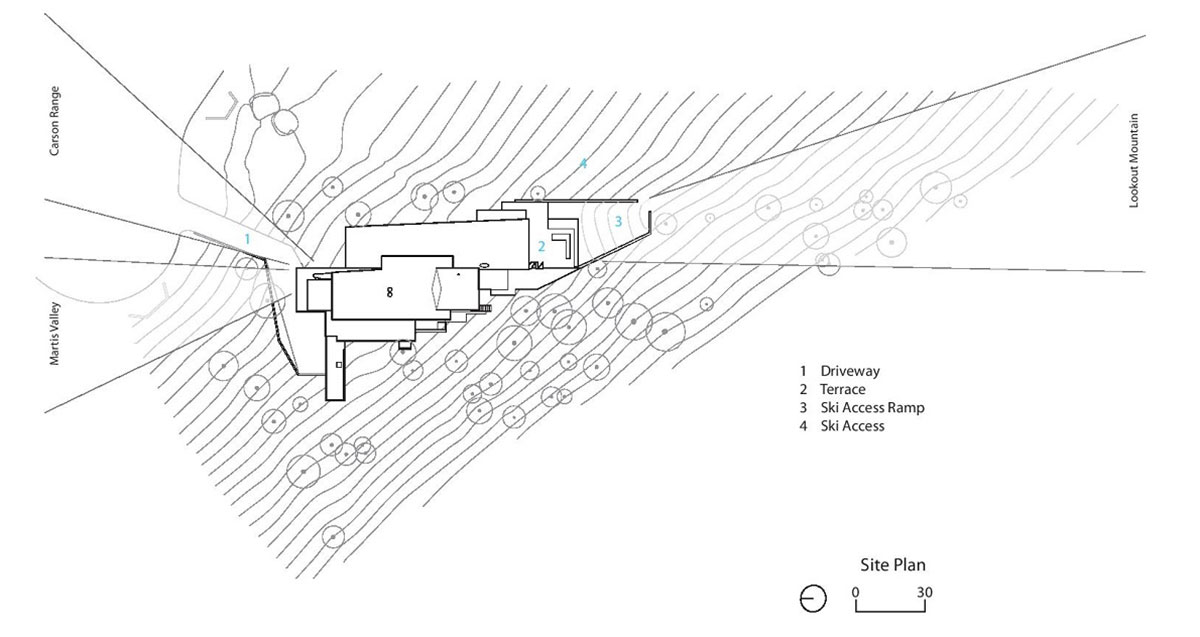
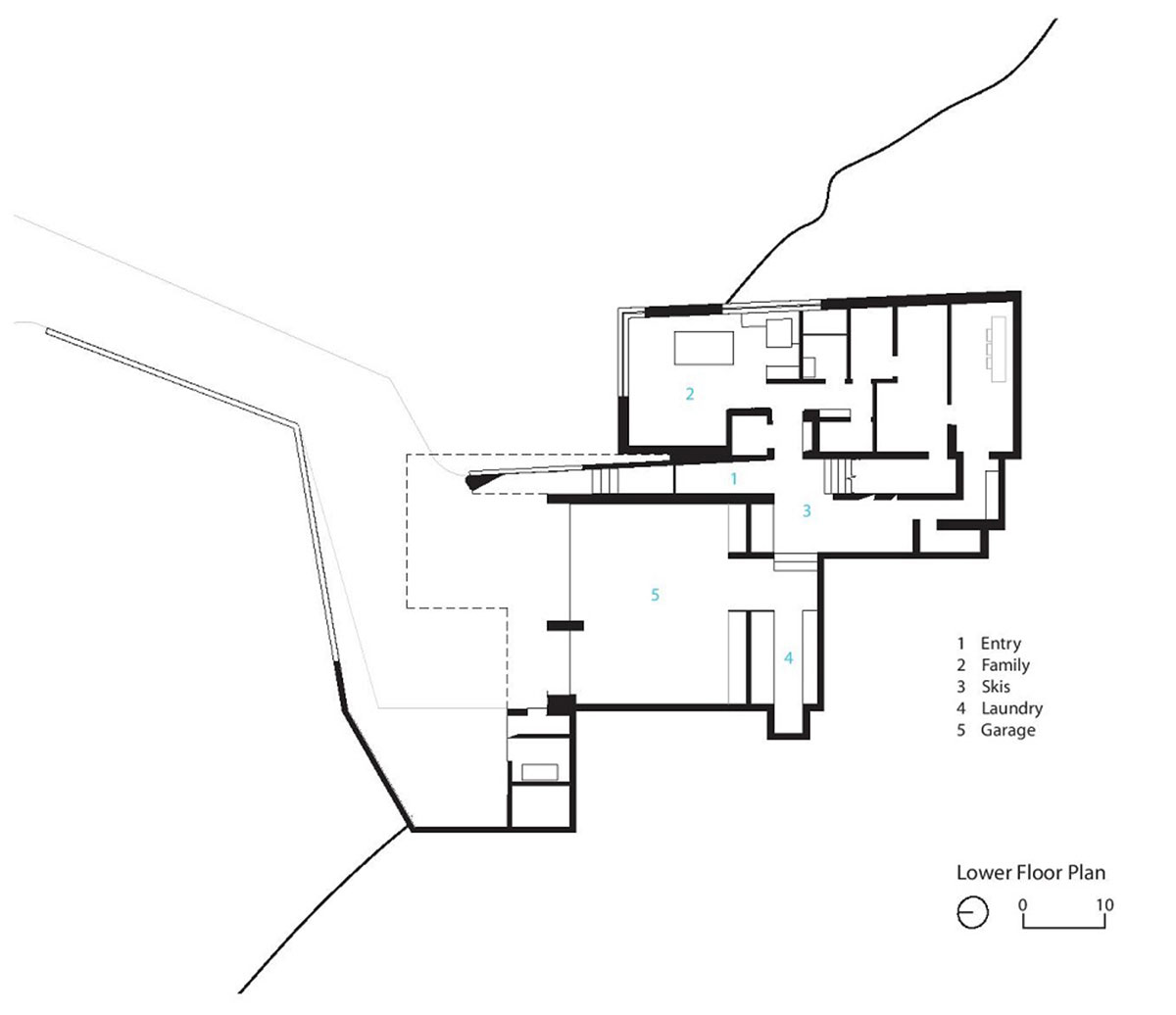

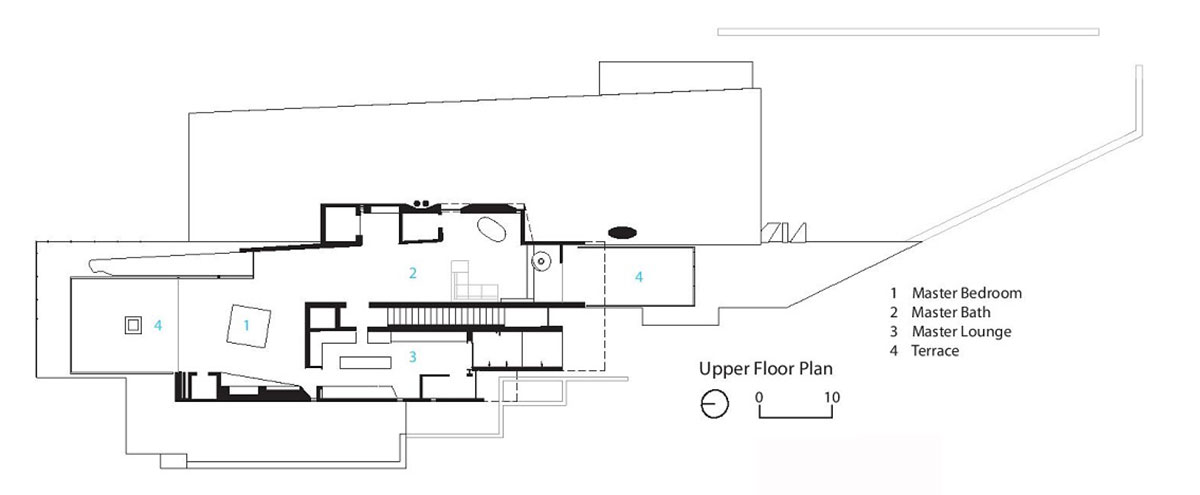

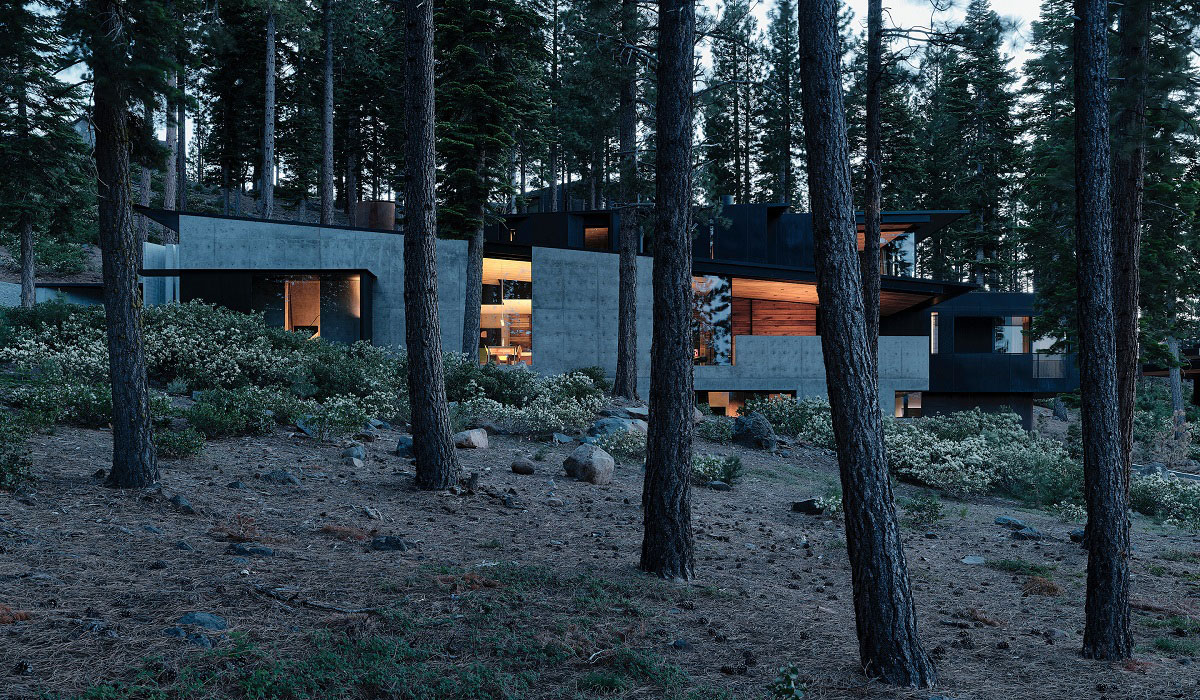
In the most private zone of the house, a master suite is perched above with panoramic views to the Martis Valley. Insulated 20-inch-thick concrete walls made from local sand and aggregate build a ground form that extends to roofs to enclose space. Full-height openings with structurally glazed sliding doors open the space to the prevailing south-westerly breezes. The concrete walls extend beyond the warm interior environment to give the exterior territories at each end. Angled to conform to the building envelope, the extended walls continue into the slope, nearly closing and connecting, but stopping short to leave a gap. The ten-foot-wide opening allows the sloped grade to pour into the building form. This reciprocity with the slope provides ski access with a dramatic opportunity to show off and end the day. The minimal materiality of volcanic basalt floors and walnut from old orchards in the nearby Sierra foothills continues the discipline of material. Consistent through the house, the quiet built environment is muted in colour and tonality, which allows the landscape outside to be the focus.
Sustainability is addressed in this project with a focus on energy retention through the choice of materials and systems. Mass-heavy concrete walls and radiantly heated stone floors, an R80 insulated roof, enhanced glazing, and high-efficiency mechanical and lighting equipment minimize energy loss and use. The exterior of concrete and steel is fire resistant and low maintenance.
Produced by layer upon layer of sketches and study that first seek to discover the existing attributes and characteristics of the place, this architecture does not reflect a singular concept or idea. The built place, including its appearance, is the product of the making of a series of experiences that together set the stage for life to unfold. The process is about an approach to problem-solving on a difficult but epic alpine site. The completed place envelopes the continuous space of the slope up to the south sun and mountain top that has existed for millions of years.
